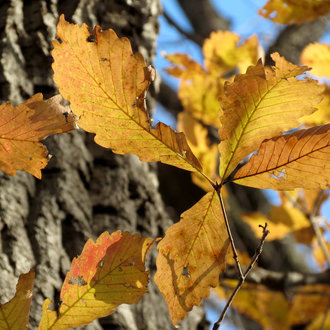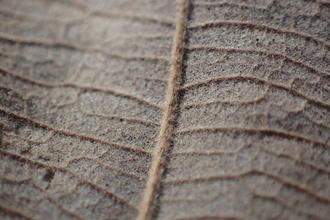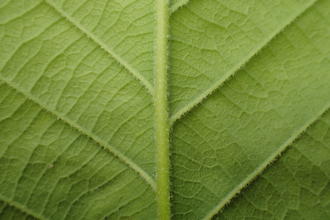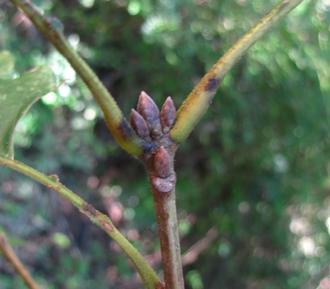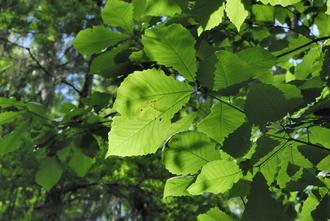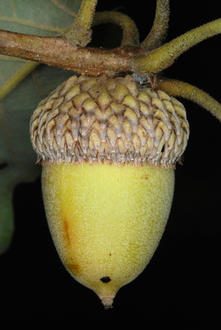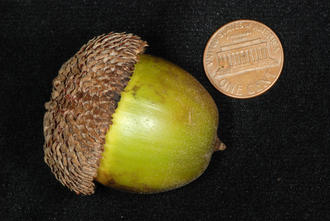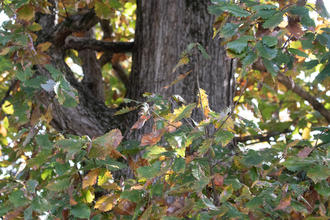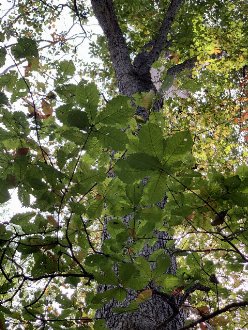Swamp Chestnut Oak (Quercus michauxii Nutt.)
Also known as basket oak, cow oak; also classified as Quercus houstoniana.
↑Summary
A white oak of bottomlands in the southeastern coastal plain and Mississippi valley, superficially resembling the chestnut oak.
↑Similar Plants
↑Habitat
Found in moist bottomlands in the southeastern coastal plain and Mississippi valley, especially on terraces of streams, but not the lowest sites. Tolerates consistently wet soils and occasional flooding, but not prolonged flooding, and grows best in moist, but well-drained soils. Prefers acidic soils ranging in texture from sandy loams to silty clay loams.
Often associated with cherrybark oak (Quercus pagoda), which has similar habitat preferences. Together these two species usually inhabit slightly drier sites than willow oak (Quercus phellos) and laurel oak (Quercus laurifolia).
Can be a climax species on ideal sites, particularly stream terraces with acidic clay-loams.
↑Life Cycle
Trees begin producing seed around 20-25 years of age, with production peaking around 40 years. Good crops are produced at 3-5 year intervals, with some production in most years.
Various animals eat the acorns, and squirrels are probably most important in distributing them due to their tendency to cache acorns.
Acorns germinate immediately after falling. Seedling survival in the first year is governed more by drainage; in their bottomland habitat, survival is best on locally-raised mounds and worst in low depressions. Seedlings that survive the first year are able to establish a broader root system and are usually less sensitive to poor drainage. Seedlings are moderately intolerant of shade, requiring a canopy gap to survive to maturity; seedlings often die after 2 years if shaded too heavily.
Individuals that are top-killed can resprout, but resprouting is not as vigorous as some oaks.
This species is unusally short-lived among white oaks, often only living 100 years but living to 200 or longer on better sites.
↑Uses
The wood of this species is similar to that of white oaks and is quite desireable; it is one of the more valuable species harvested from the bottomland habitats in which it occurs. However, management for sustainable harvest, allowing it to regenerate following cutting, can be tricky.
The wood can also be split into thin, flexible strips, which were historically used for basket weaving; this use is responsible for the common name 'Basket Oak'.
It is infrequently used as a landscaping plant, and not widely available at commercial nurseries, but it makes a good choice of shade tree for moist sites in and slightly north of its range.
↑Related Plants
This species can hybridize with other white oaks, and co-occurs with many of them. It is probably closest-related to white oak (Quercus alba), followed by chestnut oak (Quercus montana).
It has been recorded hybridizing with Quercus alba, to produce beadle oak (Quercus ×beadlei), which is uncommon but has occurred in many different locations where these species overlap in range. It hybridizes with overcup oak (Quercus lyrata) to form totten oak (Quercus ×tottenii).
↑Links & External Resources
• Swamp Chestnut Oak | The Wood Database (About This Site)
• Quercus michauxii (Swamp Chestnut Oak) | USDA PLANTS Database (About This Site)
• Swamp Chestnut Oak | iNaturalist (About This Site)
• Quercus michauxii (Swamp Chestnut Oak) | Missouri Botanical Garden Plant Finder (About This Site)
• Swamp Chestnut Oak | Virginia Tech Dendrology Factsheets (About This Site)
• Swamp Chestnut Oak | Silvics of North America (About This Site)
• Quercus michauxii | Biota of North America Project (BONAP) (About This Site)
• Quercus michauxii | NatureServe Explorer (About This Site)
• Quercus michauxii | Flora of North America (About This Site)
• Basket Oak | Maryland Biodiversity Project (About This Site)
• Quercus michauxii Nuttall (Swamp Chestnut Oak, Basket Oak) | Digital Atlas of the Virginia Flora (About This Site)




